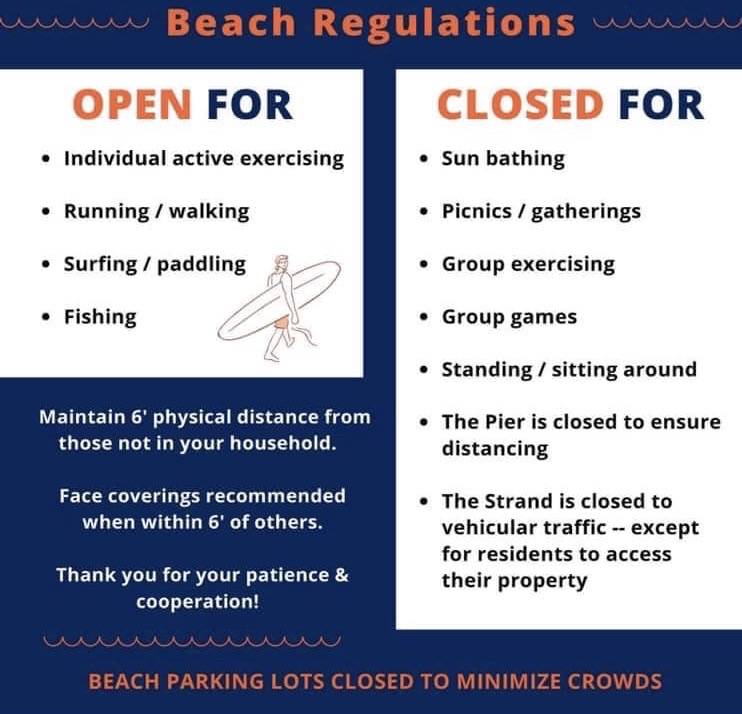
Safely restore access to our beaches
This guide and resource were developed so that Miami Beach and other municipalities can reopen their beaches safely after closures brought about by the Coronavirus (COVID19). It is relying on the experiences of “on the ground” enforcement staff, thought leaders for coastline access, and the cumulative experience of other places that have already reopened their beaches.
10 Guidelines for Reopening a Beach
- Limit Use
Passive uses should be avoided as they tend to gather crowds. Active use, such as exercise, is easy to differentiate from passive use. Prohibiting items that lend themselves to lounging, including chairs and blankets, can deter non-permitted usage. That being said, the beach is an area of meditation and wellness for many people. Passive uses should be planned for and implemented as soon as possible.
- Limit Access Points
Smaller numbers of access points allow for resources to be concentrated where they are most needed. Limited access points will allow visitors to be more easily monitored to ensure compliance and provides centralized places for education and signage. The reduction of parking will also limit access.
- Provide Onsite Education
Whatever rules are established will be new to visitors. They may not fully understand how to comply, or may not believe that compliance is in their best interest. Each interaction can be a teaching moment. Environmental education upon returning to our coasts would pay dividends!
- Limit Access Times
Usage is highly correlated to the time of day. If overcrowding is a potential factor, choosing to open for limited hours, during non-peak times can be a good way to mitigate risk.
- Open on a Non-Busy Day
The first day(s) of opening will likely see the largest number of visitors, so avoiding typically popular days like weekends will lessen the need for resources to provide education and ensure compliance. If changes or additions to the plan are necessary, they can be done ahead of peak usage.
- Maintain a Physical Enforcement Presence
In any group, there will be a small number of individuals that will eschew the rules if they feel that they can “get away with it.” A visible enforcement presence will lessen the likelihood of bad behavior.
- Have an overflow plan
It’s important to create a system of relief that can be enacted when enforcement and education need to be increased due to visitor demand in excess of supply.
- Make the rules easy to understand
Visitors are more likely to follow rules if they are presented in a clear and concise manner, void of ambiguity. Rules with many exceptions are harder to convey in a manner that results in compliance.
- Communicate early and often
As soon as uses, access and rules are developed, it is best to convey them to the public so that learning can start ahead of openings.
- Be empathetic
Visitors are under an enormous amount of stress. They should be welcomed to our public spaces and encouraged to follow the rules in a gentle, empathetic manner. If possible, provide ways for visitors to comply with rules, if they are unable. Eg: Provide facemasks.
Resources
Acknowledgments
HUGE thanks to the city employees that have provided us with insight about what’s happening day-to-day with education and enforcement related to the use of our public spaces after reopening. They shall remain anonymous but we’re ever-grateful for their feedback and service to the community!
Special thanks to Dr. Chad Nelsen, CEO of Surfrider Foundation for his input.